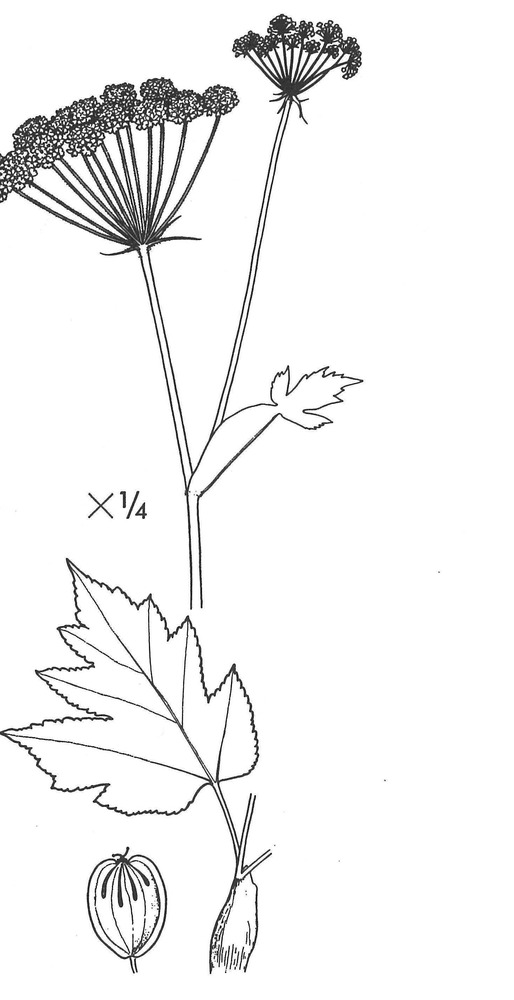| Heracleum lanatum Michx. | |||
| |||
| Family | Umbelliferae — APG family: Apiaceae | ||
| Synonyms | Heracleum maximum Bartr. | ||
| Common name | cow parsnip | ||
| Description | Thick, stout, up to over 2 meters tall; stems from thick taproot; leaves large, to- mentose when young, more or less glabrescent in age, ternate, the upper with con- spicuously inflated sheaths; leaflets petiolulate, palmately lobed, coarsely toothed; rays of umbel 15-30, the terminal umbel much larger than other umbels; flowers white; fruit obovate to obcordate, emarginate, villose to glabrate; lateral ribs with thin wings, dorsal ribs filiform. | ||
| Ecology | Woods, meadows, in the interior mostly in the mountains. Described from Can- ada. | ||
| Uses | The marrow is eaten raw and the root boiled by the natives; the plant contains sugar and tastes much like licorice. |
This is a digital representation of Eric Hultén’s ‘Flora of Alaska and Neighboring Territories: A Manual of the Vascular Plants’, which was published by Stanford University Press in 1968. The book was digitized by C. Webb (at UAMN) as part of the Flora of Alaska project, with funding by the US NSF (Grant 1759964 to Ickert-Bond & Webb), and with permission of Stanford University Press. Data and images © 1968 Board of Trustees of the Leland Stanford Jr. Univ. Usage licence: Creative Commons BY-NC-SA 4.0. NB: You may find OCR errors; please refer to the hard-copy if in doubt.
